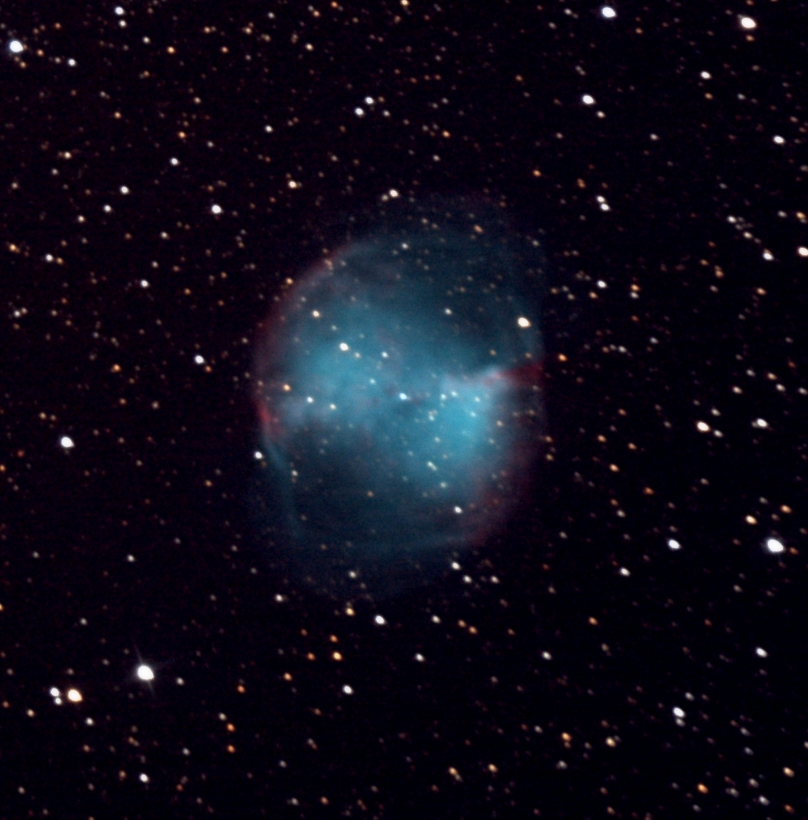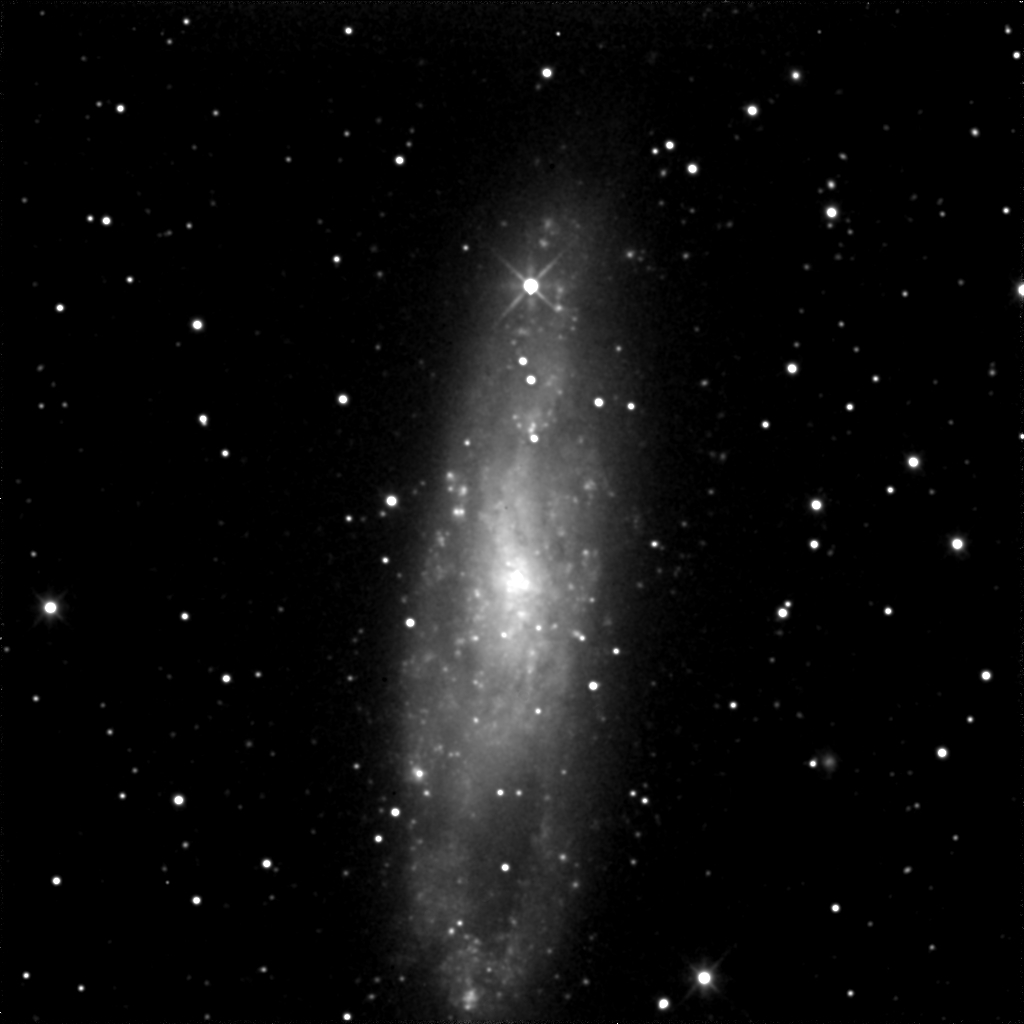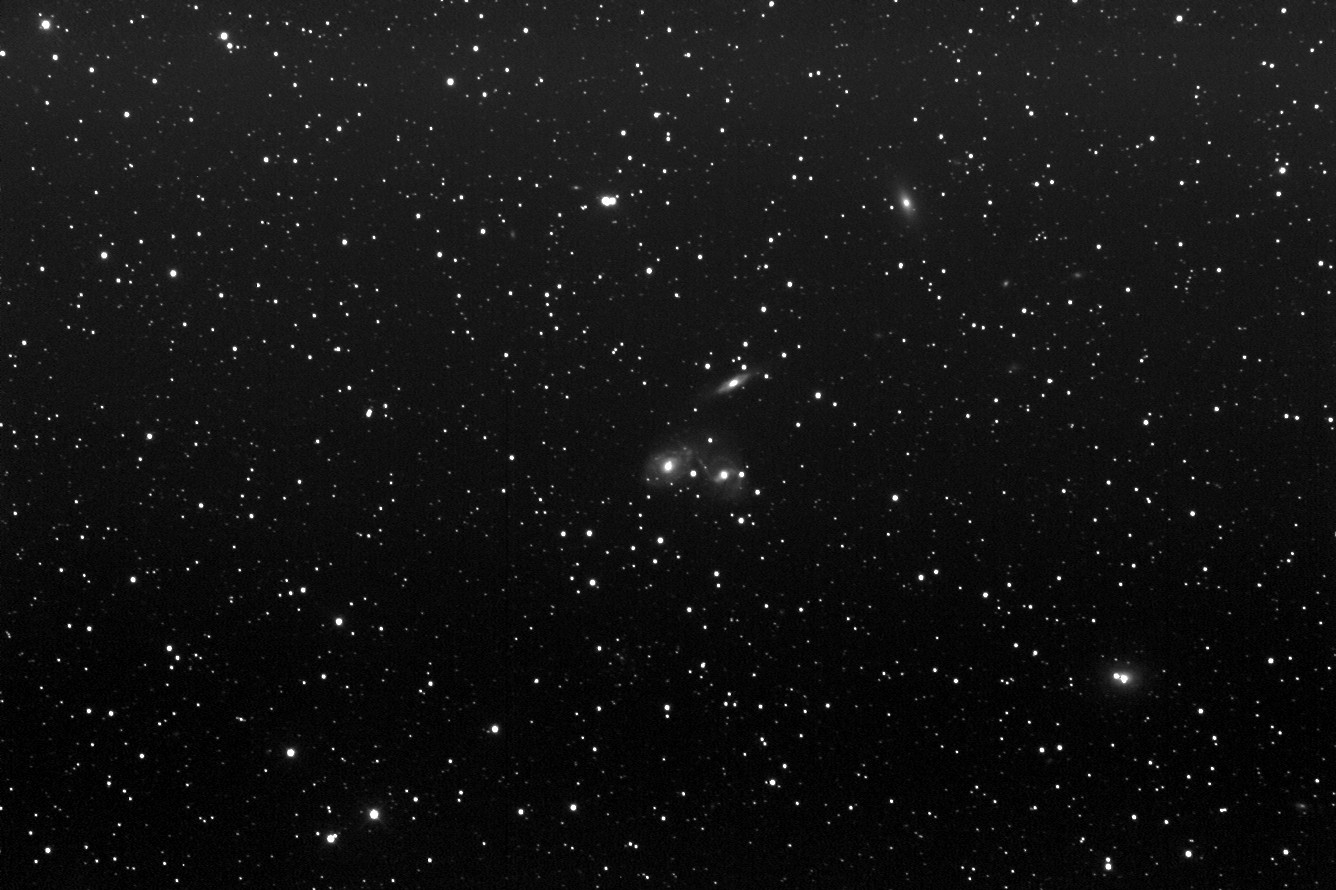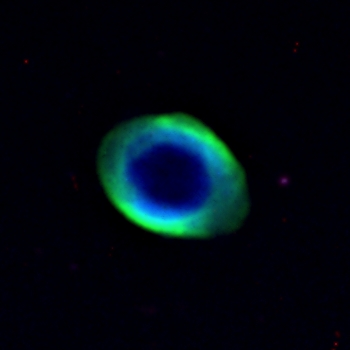Global Rent A Scope run a free trial introduction on one of their Australian telescopes. One click imaging; all you have to do is select what you want to image from the list of visible objects and the system will select an exposure, convert the camera picture to jpeg and email it to you when it’s finished. The result from a single 2 minute exposure of M42 is pretty good on it’s own, but the system also files a copy of the original FITS image on the FTP server. This extends the possibility of stacking multiple images for a lower noise picture.
So, after taking 3 images in a row I downloaded them and opened them in Maxim DL. What was immediately clear was just how good a job the system does in automating the jpeg image production. It took me several hours work to get close to the system’s image. Here’s the finished result, the telescope is a Takahashi Sky-90 with an SBIG ST-2000 XMC camera.









